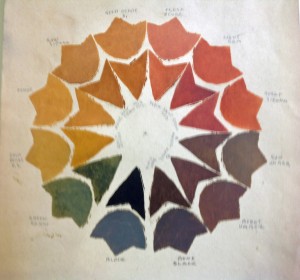Not all of Santa’s presents end up underneath someone’s Christmas tree. Quite a few of them landed in our collections.
Generous donors surprised and delighted us with some remarkable year-end gifts. We’re still sorting through the record-keeping details, but here’s a peek at a few donations that will help us better tell the story of New Mexico.
Photo Curator Daniel Kosharek called this “a boon year” for donations to the Palace of the Governors Photo Archives. “There were numerous donations of prints for the lowrider exhibit from Dottie Lopez, Kevin Bubriski, Imanol Miranda, Robert Eckert, Gabriella Marks, Jim Arndt, William Davis, and Hunter Barnes,” he said. “In addition, we received the Barbara Erdman Collection of 145 photographic prints. In the 1970s and 1980s Erdman began to piece together the work of New Mexico photographers, and this represents a virtual who’s who of contemporary New Mexican photographers—some of whom went on to stellar careers.”
Last fall, former U.S. Treasury Secretary Katherine Dávalos Ortega, a Tularosa native, visited the Fray Angélico Chávez History Library to ask about our interest in acquiring some of her memorabilia. “We were very excited to accept and receive her inauguration dress, her appointment document, awards and the original template of the $1 bill with her signature,” said Librarian Tomas Jaehn.
The Ann Baumann Trust gifted the Palace Press with more than 100 wood blocks carved by artist Gustave Baumann, plus a series of color swatches and wheels crafted by the master printer.
“They’re just WOW,” Palace Press Director Thomas Leech said. “The amount of work this guy did is amazing. He was a scientist, experimenting with colors over many decades. The blocks are the kind of thing he’d do on a Sunday, listening to the opera, just whittling.”
The Press is also working out final details to acquire a never-published manuscript by Mary Austin, The Little Saints of New Mexico, along with 76 Baumann blocks illustrating it. Leech hopes the Palace Press will be the first to print the book. More importantly, he said, the museum is building public knowledge of Baumann’s process.
“People want to know `how did he do that?’” Leech said. “Through these donations, I’m piecing it together.”

